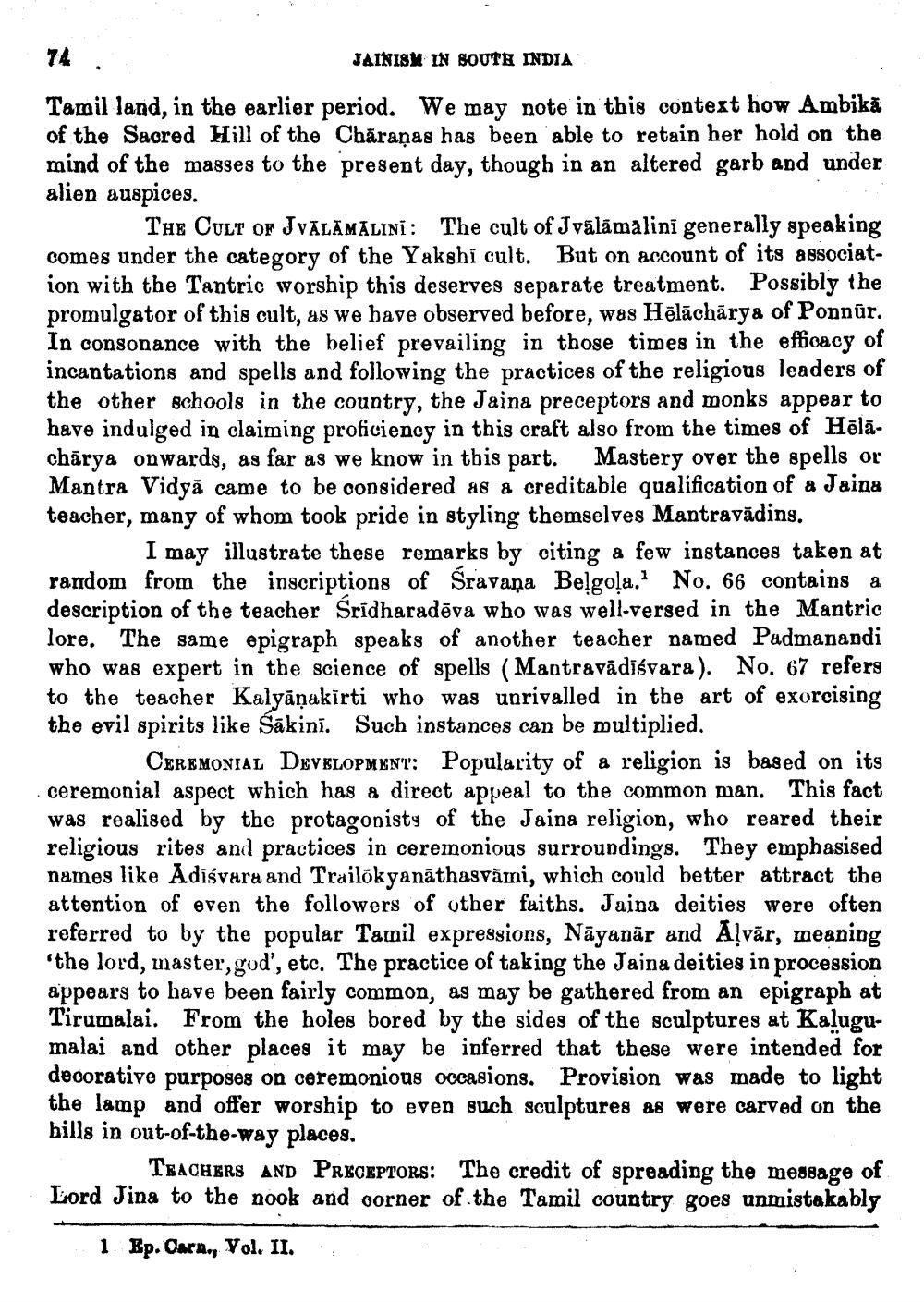________________
74.
JAINISM IN SOUTH INDIA Tamil land, in the earlier period. We may note in this context how Ambikā of the Sacred Hill of the Chāraṇas has been able to retain her hold on the mind of the masses to the present day, though in an altered garb and under alien auspices.
The Cult of JVĀLĀMĀLINI: The cult of Jválāmalini generally speaking comes under the category of the Yakshi cult. But on account of its association with the Tantric worship this deserves separate treatment. Possibly the promulgator of this cult, as we have observed before, was Hēlāchārya of Ponnür. In consonance with the belief prevailing in those times in the efficacy of incantations and spells and following the practices of the religious leaders of the other schools in the country, the Jaina preceptors and monks appear to have indulged in claiming proficiency in this craft also from the times of Hēlāchārya onwards, as far as we know in this part. Mastery over the spells or Mantra Vidyā came to be considered as a creditable qualification of a Jaina teacher, many of whom took pride in styling themselves Mantravādins.
I may illustrate these remarks by citing a few instances taken at random from the inscriptions of Sravana Belgo!a. No. 66 contains a description of the teacher Śrīdharadēva who was well-versed in the Mantric lore. The same epigraph speaks of another teacher named Padmanandi who was expert in the science of spells (Mantravādīśvara). No. 67 refers to the teacher Kalyāṇakirti who was unrivalled in the art of exorcising the evil spirits like Sākini. Such instances can be multiplied.
CEREMONIAL DEVELOPMENT: Popularity of a religion is based on its ceremonial aspect which has a direct appeal to the common man. This fact was realised by the protagonists of the Jaina religion, who reared their religious rites and practices in ceremonious surroundings. They emphasised names like Adiśvara and Trailokyanāthasvāmi, which could better attract the attention of even the followers of other faiths. Jaina deities were often referred to by the popular Tamil expressions, Nāyanār and Aļvār, meaning 'the lord, master,god', etc. The practice of taking the Jaina deities in procession appears to have been fairly common, as may be gathered from an epigraph at Tirumalai. From the holes bored by the sides of the sculptures at Kalugumalai and other places it may be inferred that these were intended for decorative purposes on ceremonious occasions. Provision was made to light the lamp and offer worship to even such sculptures as were carved on the bills in out-of-the-way places.
TEACHERS AND PRECEPTORS: The credit of spreading the message of Lord Jina to the nook and corner of the Tamil country goes unmistakably
1 Ep. Carmo, Vol. II.




